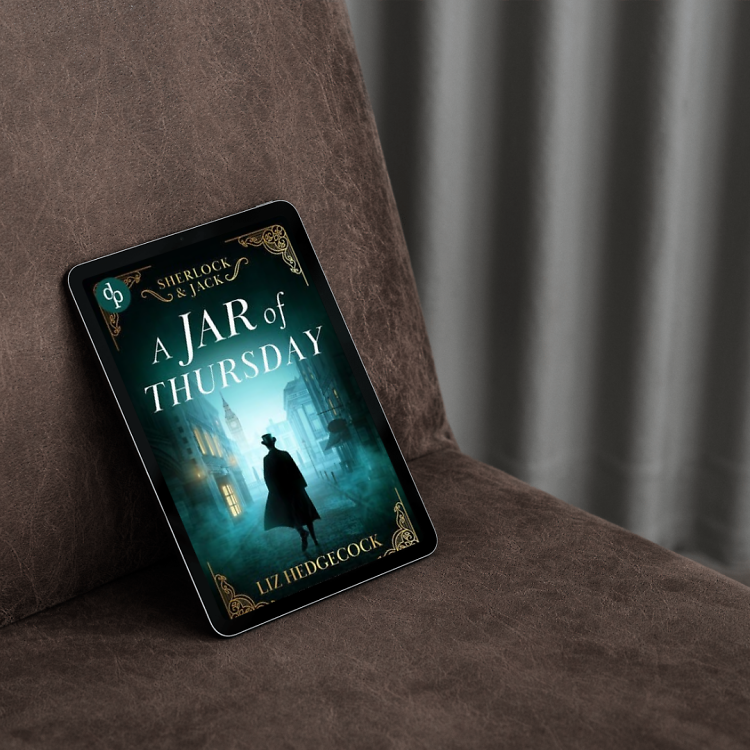What is your book A Jar of Thursday about?
All sorts of things! It began as a continuation or resolution of one of the stories from The Secret Notebook of Sherlock Holmes. Then it became a coming-of-age story and also an exploration of what it might have been like to be a working-class woman with limited opportunities in the Victorian period.
What inspired you to blend classic detective fiction with time travel in such a unique way?
One of the things I enjoyed about writing The Secret Notebook of Sherlock Holmes was the chance to incorporate lots of references to people and events from the period. Spot the person with a degree in Victorian stuff! I got HG Wells in there, and I loved the idea of including science fiction, steampunk and fin-de-siècle elements in a detective novel.
Jack Hargreaves is an intriguing character – how did you come up with her secret, and did it change as the story developed?
When I was in the early stages of thinking about the story, I assumed that Jack was a young man, but something didn’t feel quite right. Then it flashed into my head that Jack was actually a woman passing as a man, and everything made perfect sense. She was fully formed before I began the draft. One of the things I really like about this series is that it takes place over a few years, so you see Jack – and her relationship with Sherlock Holmes – mature.
Fingers Molloy is no ordinary burglar! Was he as fun to write as he seems to be on the page?
I like Fingers very much because he’s street smart, but he also knows when to call on other people for help. And yes, he was great fun to write! He reappears later in the series, and I’m always glad to see him.
Sherlock Holmes appears in a fresh light here – what was it like writing your own version of such an iconic character?
I’d already written two versions of Sherlock – the largely comical Sherlock from Secret Notebook and the more serious but also more human Sherlock of A House of Mirrors – before this one, who is pitched somewhere between the two. My take, for what it’s worth, is that Conan Doyle’s Sherlock is almost always seen from Watson’s perspective. Once you move away from that, he can change.
The 1890s London setting feels so rich and vivid. How did you research or imagine this particular world?
When I was a postgraduate student, back in the day, I specialised in late 19th-century literature, so I had a good grounding. Plus I grew up a train ride away from the centre of London, so I had plenty of memories to draw on. I also did some research on Victorian fashion in the Liddell Hart archives at Liverpool John Moores University. Those things, plus a lot of time on Google Street View, informed the book!
Time-traveling gadgets and strange heists – did you have a favourite device or scene to write?
My favourite is when Jack tries out the time machine for the first time. There’s trepidation, awkwardness, and revulsion – a winning combination for a comic scene!
Jack finds herself caught between choices – what do you think makes a good morally conflicted character?
I think it’s important that the stakes are high, that it’s a genuine choice, and also that whichever way the decision goes, the character will have to lose something.
Can we expect more adventures in this timeline-hopping detective world?
At the moment it’s a three-book series, but I’ve learnt that you should never say never! I must admit that I’ve had a few more ideas of how Jack and Sherlock could cross paths again, so let’s see…
Do you write any books which don’t involve Sherlock Holmes?
I certainly do! I write historical and contemporary mysteries, some of which lean into fantasy and the paranormal. I’ve also cowritten a couple of series with Paula Harmon, whose Margaret Demeray series is published by dp, and we’re currently working on a third.

